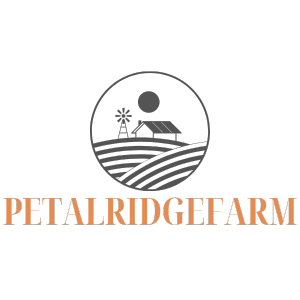Sunflower farming isn’t just a way to grow beautiful blooms; it’s a journey into a world where vibrant yellow petals dance in the breeze and attract buzzing bees like a magnet. Imagine fields stretching as far as the eye can see, turning the landscape into a golden sea. But it’s not all sunshine and rainbows—there’s more to it than meets the eye.
Sun Flower Farming
Sunflower farming encompasses various practices focused on cultivating sunflowers for oil production, seeds, and ornamental use. Farmers often select hybrid varieties for higher yields and disease resistance. Crop rotation plays a significant role in maintaining soil fertility and preventing diseases in sunflower crops.
Soil preparation is essential before planting. Suitable soil types include loamy or sandy soils with good drainage. Farmers incorporate appropriate fertilizers to enhance soil nutrients, ensuring optimal growth conditions.
Planting typically occurs in spring, coinciding with the last frost date. The ideal planting density is between 20,000 and 30,000 plants per acre. Irrigation becomes crucial during dry spells, and sunflowers require around 15 inches of water during their growing season.
Pest management is vital for maintaining healthy crops. Common pests include aphids and sunflower beetles, which can significantly affect yields. Integrated Pest Management (IPM) strategies help reduce the need for chemical treatments.
Harvesting takes place when the back of the heads turns yellow and seeds harden. Timing is critical, as delayed harvesting can lead to shattering and lower yields. Farmers often use combines equipped with specialized headers for efficient harvesting.
Post-harvest processing includes cleaning and storage. Proper storage conditions prevent spoilage and maintain seed quality. Sunflower seeds can be processed for oil extraction or sold as snack food, creating various market opportunities.
Benefits of Growing Sunflowers

Growing sunflowers provides numerous benefits for farmers and the environment. Both economic advantages and environmental contributions make sunflower farming an appealing choice.
Economic Advantages
Sunflower farming offers significant financial benefits. High market demand exists for sunflower oil, leading to lucrative sales opportunities for farmers. Yields range from 1,200 to 2,000 pounds of seeds per acre, increasing the potential for profit. Additionally, sunflowers require relatively low input costs compared to other crops. Farmers can maximize earnings through selling seeds as snack food or bird feed. Crop versatility enhances income sources, with sunflowers fitting well in rotation systems with crops like corn and soybeans. Thus, growing sunflowers strengthens farm profitability and market positioning.
Environmental Benefits
Sunflowers contribute positively to the environment. They enhance soil health through deep rooting systems, which prevent erosion and improve structure. Sunflowers attract pollinators such as bees, promoting biodiversity. Additionally, they provide habitat for beneficial insects that control pests naturally. Growing sunflowers also leads to reduced reliance on chemical pesticides, aligning with sustainable farming practices. Their ability to absorb carbon dioxide during growth enhances air quality. Overall, sunflowers support environmental health while offering effective agricultural practices.
Best Practices in Sun Flower Farming
Sunflower farming requires attention to detail and adherence to best practices. Implementing effective strategies leads to higher yields and healthier plants.
Soil Preparation Techniques
Soil preparation plays a crucial role in sunflower farming. Ideal soils include loamy or sandy types rich in organic matter. Testing soil quality ensures proper pH levels, ideally between 6.0 and 7.5. Incorporating cover crops adds organic material, enhancing nutrient levels. Additionally, tilling helps aerate the soil and reduce weed competition. Moreover, applying fertilizers based on soil tests ensures plants receive adequate nutrients. These techniques create a fertile environment conducive to robust sunflower growth.
Pest and Disease Management
Managing pests and diseases in sunflower fields requires proactive measures. Common pests include aphids and sunflower beetles, which can be mitigated through Integrated Pest Management strategies. Utilizing beneficial insects supports natural pest control, reducing reliance on chemicals. Crop rotation is essential for breaking the life cycles of pests and preventing disease buildup. Monitoring fields regularly detects early signs of disease or pest issues. Implementing resistant hybrid varieties lowers the risk of infestation, facilitating healthier crop development. Consistent management practices protect sunflower yields and contribute to sustainable farming efforts.
Harvesting and Marketing Sunflowers
Sunflower harvesting requires careful timing and an understanding of market dynamics. Attention to the right indicators ensures optimal yields and profitability.
Optimal Harvest Time
Harvesting sunflowers typically occurs when heads droop and seeds darken. This timing minimizes shattering and maximizes seed quality. Farmers often monitor moisture levels, aiming for around 10 to 12 percent moisture at harvest. Equipment like combines with specialized headers makes harvesting efficient, ensuring minimal seed loss in the process. Understanding local climate conditions helps in predicting the best harvest window, often between late summer and early fall in many regions.
Selling Options and Market Trends
Farmers can tap into various selling options, including local markets, wholesalers, and online platforms. Yearly demand for sunflower oil continues to rise, driven by health trends favoring plant-based oils. The U.S. market showcases significant growth with yields averaging 1,200 to 2,000 pounds of seeds per acre. Understanding buyer preferences aids in targeting the right market segments, whether for oil, snacks, or ornamental purposes. Networking with processing companies enhances market access and profitability.
Challenges in Sun Flower Farming
Adverse weather conditions can severely impact sunflower farming. Drought can reduce yields significantly, as sunflowers require about 15 inches of water throughout their growing season. Conversely, excessive rainfall can lead to root rot and other diseases, drastically affecting plant health.
Pest management presents another challenge. Common pests like aphids and sunflower beetles threaten crops, necessitating effective Integrated Pest Management strategies. Farmers might face difficulties identifying the right balance of pest control, particularly when minimizing chemical use.
Diseases can also pose risks to sunflower crops. Fungal infections like downy mildew and Sclerotinia can devastate yields. Crop rotation helps mitigate these issues, but implementing it effectively requires careful planning and monitoring.
Market fluctuations add another layer of complexity. Prices for sunflower oil and seeds can vary, influenced by factors such as supply, demand, and global trends. Farmers must stay informed about market dynamics to make strategic decisions regarding planting and selling.
Labor availability affects operational efficiency. Hiring skilled labor for planting, maintenance, and harvesting can become a challenge, impacting overall productivity. Automation may offer solutions, but initial investments can be significant.
Soil health management plays a critical role in successful sunflower farming. Maintaining nutrient levels requires ongoing testing and remediation efforts. Farmers must invest time and resources in understanding their soil’s needs.
Lastly, competition in the sunflower market is fierce. With numerous growers producing similar products, differentiation becomes essential. Marketing strategies must reflect unique selling points, emphasizing quality and sustainability to attract buyers effectively.
Unique Selling Points
Sunflower farming offers a unique blend of beauty and practicality. It not only enhances landscapes but also plays a vital role in the agricultural economy. With the right practices in place farmers can successfully navigate challenges while maximizing yields and profits.
The environmental benefits further underscore its importance in sustainable agriculture. As the demand for sunflower products continues to grow farmers have ample opportunities to thrive in this vibrant market. Embracing innovative techniques and staying informed on best practices will ensure a fruitful journey in sunflower farming.

